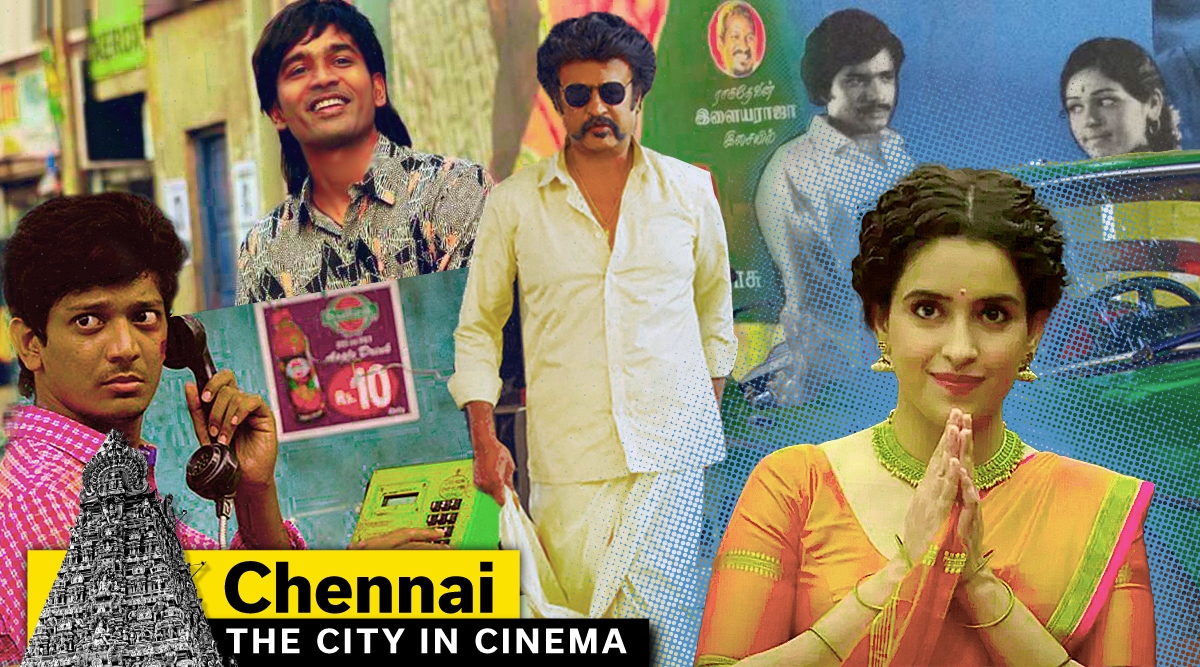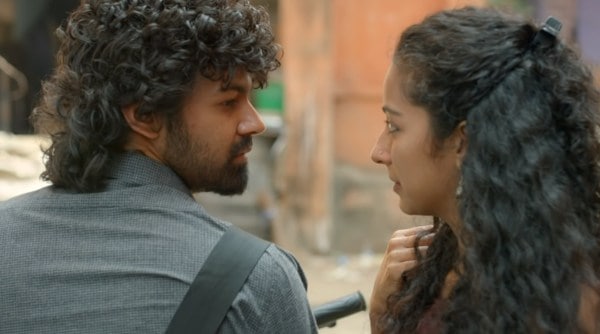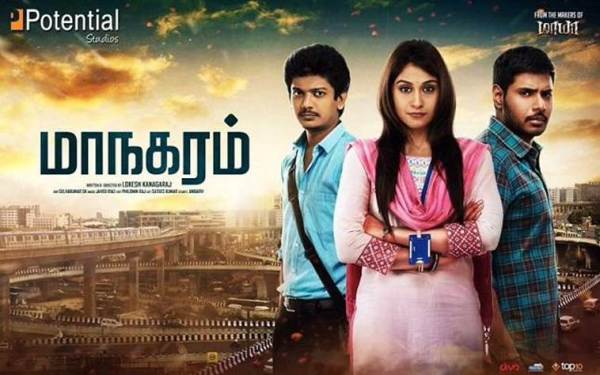 Here are the films that capture the experience of living in Chennai city.
Here are the films that capture the experience of living in Chennai city. I have never lived in Chennai in my life. But, I feel I know Chennai as well as anyone who’s born and bred there. The reason: Tamil cinema. I grew up on Tamil movies, fairly shaping my social experience at a deeper level. The fashion sense, the friends I picked, the inside jokes, and the slang I spoke, all were influenced by the trends that were imported from the streets of Chennai through the magical screens of the cinema.
Chennai is known for the love and kindness it shows to outsiders. The saying goes, ‘Vantharai vaazha vaikkum Chennai (the city welcomes and nurtures everyone)’. It was a slogan popularized through movies across generations. And there was evidence to suggest that there was some truth to it. I heard the stories of how Rajinikanth, Prakash Raj, and Arjun Sarja all became huge movie stars after going to Chennai. I took a lot of pride when I learned the fact that Rajinikanth was an export from Bengaluru, Karnataka. And every time Rajinikanth spoke Kannada with great fluency and clarity, I was in awe.
Even today for several young filmmakers, the authentic Chennai experience constitutes walking on the peaceful streets of Agraharam, sipping on filter coffee, a visit to Sathyam cinemas, Marina Beach and, of course, watching a Rajinikanth movie in a packed theatre. Take, for example, filmmaker Vineeth Sreenivasan. He wrote and directed a coming-of-age Malayalam movie called Hridayam. The film was sort of a memory piece that allowed him to put every pleasurable memory he remembered from his college days in Chennai. And the Chennai he showed us was not very different from the ones the filmmakers before him sold to us through the silver screen. It had the beach, cinemas, filter coffee, Carnatic music and all the typical characteristics of the city we have grown accustomed to. It unapologetically played up the niceties of the city. It was equivalent to munching on comfort food. But, is that all to the city?
Hridayam was an outsider’s experience of Chennai. The movie is about a young man, who comes to the city with dreams of living a life that he couldn’t live in his native city. A city where he could experience life in new dimensions and possibilities that he never could have back in his hometown. For the hero, Chennai represented a land of freedom and opportunity.
And then there are Hindi movies like Vivek Soni’s Meenakshi Sundareshwar. The film chronicles relationship problems between a timid couple hailing from a Tamil family. It was a lousy attempt to capture the essence of Tamil culture. The filmmakers of this film were stuck in time. The only reference of these filmmakers to anything distinctively Tamil culture and its lifestyle seems to stem from the movie Padosan, which came out in 1968.
 Meenakshi Sundareshwar is streaming on Netflix.
Meenakshi Sundareshwar is streaming on Netflix. In a way, Hridayam and Meenakshi Sundareshwar both are the by-products of ideas of Tamil culture and the Tamil state that were supplied by mainstream movies. Even though Hridayam was a dreamy and genuine personal expression of a filmmaker’s memory, Meenakshi Sundareshwar is what you get when somebody makes a film based on their limited assumptions without any real-world knowledge about the subject they are dealing with.
And the question remains, is there more to Chennai and Tamil cultural experience than filter coffee, Carnatic music and Rajinikanth?
North Chennai
Director K. Balachander’s 1977 movie Pattina Pravesam was an anti-city life movie. The film was the antithesis of all those who desired and desperately sought to experience everything that a metropolis like Chennai had to offer. The film revolves around the ordeal that members of a family go through when they seek to build a life in a chaotic city, leaving behind a humble, but peaceful and content life in their village. And by the end of the movie, they all return to their village, learning the hard fact that an outsider’s experience doesn’t necessarily have to be as ennobling, pleasurable, and uplifting as Arun Neelakandan in Hridayam. Sometimes the city takes more from people than it gives.
There was a period in Tamil cinema when Chennai city was painted as a hub of all things criminal. To be precise, north Chennai. The ghettos of north Chennai were portrayed as the yin to south Chennai’s yang. Darkness and light. If people in south Chennai represented power, progress, wealth, modernity and education, its north stood for crimes, poverty, and social and intellectual backwardness. How much of the truth there was to such a mainstream representation of the different parts of the city and its people is questionable. But, it must have been convenient for the filmmakers to have such a simplistic division for staging the narration of the fight between good versus evil.
 Hridayam was helmed by Vineeth Sreenivasan. (Photo: Screengrab/YouTube)
Hridayam was helmed by Vineeth Sreenivasan. (Photo: Screengrab/YouTube) The stories of north Chennai and the characters who inhabited it were not as complex as the ones that inhabited other parts of the city. The characters could be fitted in one of these two broad descriptions: A, they are the foot soldiers who carry out hit jobs for the wealthy and powerful, who don’t want to get their hands and the crisp white linen shirts dirty. B, they are poor, and undernourished, but they have a good heart and soul, and lack ambition. They are happy and content with their place in society. You can fit most of the movies that were made before the pre-Vetrimaaran and pre-Pa.Ranjith era within these brackets. There were a few exceptions to these rules, however.
In the early 2000s, some filmmakers did manage to find heroes in the streets of Vada Chennai. Gemini (2002), Aaru (2005) and the cult classic Pudhupettai to name a few. These movies showed us a day-in-a-life of gangsters controlling the lands lying on the north side of the Coovum river. In a way, these films celebrated north Chennai without any judgement. But, they were still the sum of the popular opinion about the proximity between life and crime in north Chennai.
Vetrimaaran’s Polladhavan (2007) was a ground-breaking film when it comes to portraying north Chennai in movies. This part of the city was still portrayed as ruthless and unforgiving, but there was a difference. There was nuance and complexity. Not all tough men are wannabe rowdies. Not every household had a lumpen element. The aspirations and desires of these youngsters were not very different from those who inhabit the swankier parts of the city.
Director Pa Ranjith changed the grammar of the way north Chennai was portrayed with his films like Attakathi, Madras and Sarpatta Parambarai. He showed us there is more character to north Chennai besides its boisterous, violent features.
Ranjith showed us that the city is not just divided into two major cardinal directions. The divisions runs on multiple levels. Madras is set against the backdrop of an impoverished housing colony. And it’s under siege by a powerful family that controls the neighbourhood. There is infighting going on between the heads of two political factions that were formerly the same party. The political conflict after a series of passionate killings has turned into a nasty personal rivalry. And all these deaths and a never-ending thirst for blood are in the pursuit to capture a wall, which is the most valuable real estate in the area. It’s believed that the one who controls the wall, controls everything around it. So the war and the politics of hate rage on.
Madras is also the film that challenged every popular notion of north Chennai. Yes, some youngsters nurture the ambition of becoming big-time gangsters, like Henry Hill in Goodfellas. But, there are also kids who want to become civil servants to serve society, talented football players, rappers, musicians and dancers. Our hero Kaali (Karthi) is an ordinary man who goes to a 9-5 corporate job and dreams of marriage and starting a family. Kaali gets upset and breaks down in tears when his love interest calls him a ‘rowdy.’ It’s because unlike other urban dwellers, who may consider that description as a badge of honour for their toughness, Kaali knows that it’s a demeaning term and he knows that he’s working hard to be better than that.
Vetrimaaran’s Vaad Chennai further explores the exploitative politics that push ordinary people to resort to violent rebellion. And it also shows the efforts of those who have failed to escape the trappings of the ghetto, trying to help the younger generation to escape the social stereotypes and live a better life.
The complexities, conflict and drama in the stories of north Chennai are so sprawling that it provides a perfect metaphorical background to tell the tales of corruption, division, inequality and resistance. No wonder north Chennai continues to remain one of the top muses for storytellers in Tamil cinema.
Vantharai vaazha vaikkum Chennai!
The theme that also haunts many new filmmakers is whether Chennai still makes the outsiders feel welcome and at home? Or is it fast losing its most talked-about character, which is to care for the fellow Chennaiite?
Late comedy icon Vivek played the role of an arrogant, know-it-all, dreamy, young man in the movie Run (2002). He comes to Chennai with the dreams of making it big, hoping that the city would be kind and supportive like everyone said, only to be robbed of all his valuables as soon as he steps out of his bus. And his belief in the city is exploited at every turn before he also learns the ways to exploit the beliefs of others for his own advantage. The biting social commentary was packed in the guise of comedy, which ran parallel to the film’s main romantic story.
 Maanagaram poster.
Maanagaram poster. Lokesh Kanagaraj’s Maanagaram explored the same theme on a more serious note. The film follows the struggles of migrant workers, outsiders, who struggle to find their way around the city. It’s not easy with none of those, who are aware of the inner workings of the city, are ready to stop for a minute and help them. “Why do you care?” “This is not your city?” We keep hearing some version of this word of caution throughout the movie.
It seems, after all, one cannot boil down the Chennai experience to a few stereotypes like filter coffee, Sathyam cinemas popcorn, ECR Road drive, and Rajinikanth movies. It’s safe to assume the kind of experience you will have in Chennai, depends on what space you occupy physically and politically.